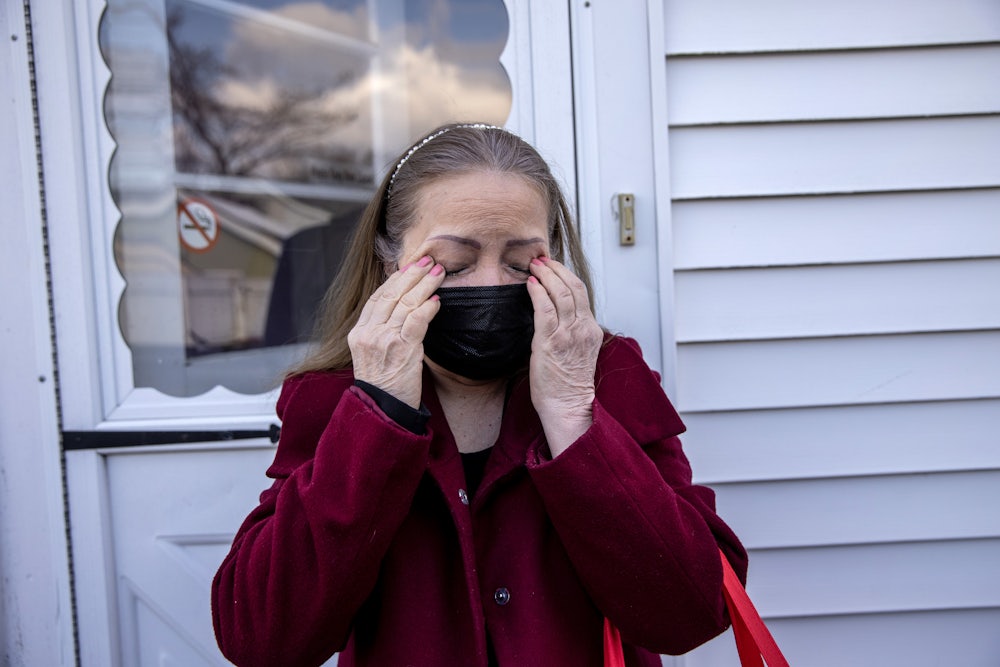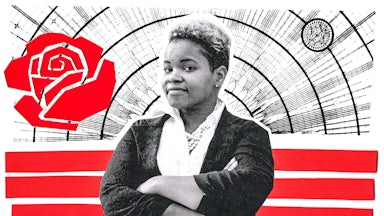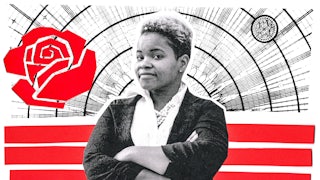A few weeks ago, Paul Gibbs, a health care activist and father in West Valley, Utah, was invited to his eight-year-old nephew’s baptism. Gibbs was eager to see his relatives, and his five-year-old son, Timmy, was excited to play with his cousins. It had been a long year of being apart.
But the invitation presented an agonizing dilemma. While Gibbs is vaccinated, he is also a kidney transplant recipient, which means he may not have mounted an effective immune response to the virus. A recent study from Johns Hopkins found that just over half of transplant patients produced antibodies after receiving two doses of the Covid-19 vaccine; among the population that mounted an immune response, the study also found it was weaker than the antibody response produced by people with stronger immune systems, according to Dorry Segev, a kidney transplant surgeon at Johns Hopkins and a co-author of the study. Though Covid vaccines are highly effective overall, people taking immunosuppressants, undergoing chemotherapy, or who have certain kinds of blood cancer are at a disadvantage in protecting themselves from the virus, said Segev.
For Gibbs, it was simply too risky to attend an indoor, mask-optional gathering of people of unknown vaccine status. “Not being able to be part of something that’s very meaningful to me, and which only happens once … was hard on me emotionally,” he said. “It makes me feel that my medical issues and risk status have excluded me from my own family.”
Gibbs is part of an emerging constituency of Americans left behind by the supposed “return to normal,” as mask requirements are loosened and workplaces that had gone remote plan to reopen. Some of these people, like Gibbs, are unsure if their bodies responded sufficiently to the vaccine. Others have disabilities and chronic illness. And thousands suffer from “long haul” Covid, diminishing their ability to work or go about daily life. All of them are now navigating a country that’s telling them to move on from the pandemic.
When the Centers for Disease Control and Prevention announced new recommendations in May that vaccinated people no longer need to wear masks in most indoor settings, many were taken aback. Some health experts have expressed concern that relaxing the mask guidance was premature, given that we haven’t reached herd immunity; there are many unknowns about immune responses among different immunosuppressed and immunodeficient groups; and children under 12, who will be or are already attending in-person school again, aren’t yet eligible for vaccinations. It’s left many parents in limbo, not least Gibbs, whose 5-year-old will be going to kindergarten in the fall.
Though CDC guidelines still recommend wearing masks on public transportation and in health care settings, they leave out places like grocery stores, restaurants, retail stores, apartment buildings, and other crowded indoor spaces. There’s no way for employees to determine who has and hasn’t gotten the vaccine, aside from the honor system. Indeed, a recent study showed that one in four unvaccinated people may not wear masks indoors. This will put immunocompromised and immunosuppressed workers at risk.
When thinking about relaxing mask guidance, we need to have “the principles of equity” in mind, said Debora Kamin Mukaz, a postdoctoral associate at the University of Vermont’s Robert Larner College of Medicine who works on health disparities and cardiovascular issues related to Covid-19. “At the root of it is a system that is unequal—a system that is putting some people at higher risk compared to others,” she said.
Kayle Hill, a disability rights activist based in Connecticut, has experienced this firsthand throughout the pandemic. Because she is immunosuppressed, she’s been forced to restrict herself much more than most, only leaving the house to go to doctor’s appointments. She was initially “thrilled and excited” to get her first vaccine shot, but then she learned that Humera, the immunosuppressive medication she takes to control her arthritis, could make the vaccine less effective. “I never was going to immediately rip my mask off and go to parties,” she told me, “but I thought, Now I can see my boyfriend’s parents. Now I can see my grandfather, who’s dying of pancreatic cancer. Now I can finally do these things that I’ve been wanting to do.” But her doctors told her that without knowing how the vaccine had affected her, she should continue to stay home.
Segev echoed that level of caution. “The main message I’m giving transplant patients is get vaccinated, act unvaccinated,” he said. “Some immunity is better than no immunity, but the maximum that they should be doing is what the CDC says is safe for unvaccinated people to do, not for vaccinated people to do.” That means continuing to wear a mask in all indoor settings, and limiting gatherings with people outside of the household to outdoors. Although it is possible for patients in Hill’s position to get their antibody levels tested to see if they mounted an immune response to the vaccine, the Food and Drug Administration does not currently recommend this for the general population because it may not give a fully accurate picture of immunity.
Knowing what she does now, Hill said, “I almost feel a little cheated.” She’s made the difficult decision to skip her boyfriend’s family reunion in Washington state due to fears about contracting the virus. “It is a huge, huge bummer that I cannot join,” she said. “To an extent, I’m used to it.… Being disabled, it’s going through periods of isolation, especially chronically ill people who have ups and downs.”
She worries about going back to a status quo that dismisses and ignores people with disabilities. “Normal for me meant being constantly sick, unemployed, living in poverty, and just not being seen,” she said. “That’s what normal is for so many disabled people. And we would like to not go back to that.”
Gibbs, who is struggling with similar feelings, suggested that instead of talking about a return to normalcy, we should be talking about a return to safety for all. “I wish we could focus [more] on the goal of public good than just being able to go back to ‘normal’ and act like this hadn’t happened,” he said. That means, first and foremost, everyone with high-functioning immune systems should get vaccinated. Because he’s not sure it worked for him, Gibbs depends on others around him getting vaccinated so he can be protected from contracting the virus. “Anybody who is vaccinated is doing so much for me to keep me safe,” he said.
In recent weeks, there has been more attention given to the issue of the millions who may not be able to produce antibodies to the vaccine. A recent study of transplant patients found that most participants showed a significant increase in antibody levels after getting a third vaccine dose, explained Segev, a co-author of the report. The results are definitely “encouraging,” he said, but he cautioned that the research is still in the early stages and more trials are necessary.
I’m a Covid long-hauler. Though my presumed Covid case in March 2020 was mild, I’ve had postviral symptoms for 15 months now, including Covid toes, leg cramps, tingling skin, and fatigue, which has required juggling multiple medications and their side effects and doctor’s appointments with a spate of specialists who can’t explain what’s wrong.
There are many of us: Up to 30 percent of Americans who have contracted Covid-19 still suffer from symptoms months later. “There is very concretely a group of patients whose lives are dramatically changed,” said David Lee, an E.R. doctor and researcher at NYU Langone Health medical center studying acute and long Covid.
All this talk of “normal” also makes me nervous. Now that I’m vaccinated, I feel safe taking public transportation, but subway stairs make my legs hurt, so I take the bus more often. Though my stamina is slowly improving, I can’t walk more than about a mile. On laundry day, my three-floor walk-up becomes harrowing. As our social lives ramp up again, I fear having to leave events early or say no altogether.
More than half of long-haulers experience fatigue, as well as brain fog and other cognitive dysfunction, along with a long list of distressing symptoms that run the gamut from tinnitus to hair loss and diagnoses like myalgic encephalomyelitis, a chronic disease characterized by extreme fatigue and debilitating pain. Many of these patients are unable to work, particularly if their jobs cannot be performed remotely, and have applied for disability benefits—only to be told they don’t qualify. NPR told the story of 55-year-old Jodee Pineau-Chaisson, who contracted Covid-19 while working in a nursing home. She had used up the 12 weeks of paid leave afforded to her through the Family and Medical Leave Act, then was fired because she couldn’t perform her job well due to memory loss and exhaustion. But she didn’t meet the criteria for disability payments, which include a diagnosis, documentation that you are unable to work, and long-term effects.
Long-haulers have also struggled to find doctors who believe them, an experience that people like Hill, who has rheumatoid arthritis and other chronic medical conditions, know well. It took years for Hill just to get her diagnoses and to find doctors who understood what she was going through; her recent move to Connecticut has meant she’s had to find new doctors. She’s on Medicare, so it’s been particularly challenging to find an in-network pain management specialist who will prescribe her the medications she needs. The opioid crisis has made many doctors mistrustful of patients who ask for pain medications, leaving people suffering from chronic pain in limbo. Her options are either to pay $400 out of pocket for an out-of-network doctor or to endure daily pain.
These kinds of challenges are now becoming more familiar to long-Covid patients, particularly given the lack of certainty around the condition’s causes and the gamut of strange symptoms it generates. “A lot of doctors are trying to hold on as tight as we can to that medical expertise that we thought we had,” said Lee. Instead of dismissing and invalidating their patients, he thinks that doctors like himself should “accept the limitations” of their “knowledge and try to seek out what might actually be going on.”
In late February, the National Institutes of Health announced a $1 billion, four-year project to research long Covid. But some with chronic conditions and disabilities resent that little-studied and understood diseases like postural orthostatic tachycardia syndrome, or POTS, a blood flow disorder that causes lightheadedness and a rapid heartbeat, and ME/CFS were dismissed and ignored until long-haulers began reporting symptoms that resembled those diagnoses. For Hill, who also has POTS, seeing major research projects on these conditions being funded and reported on feels “bittersweet.” As she explained, “There is that frustration of being constantly ignored, and then it feels like somebody else comes up with the same problem, and they’re listened to. And that can be very aggravating.”
On the other hand, Hill said, historically a great deal of disability rights progress has occurred when there have been “large influxes of disabled people at one time,” such as after World Wars I and II. Covid-19 has been no exception.
Hill fears that once things are declared back to “normal,” people with disabilities will once again be pushed to the sidelines of the conversation, their needs once again glossed over or ignored by the able-bodied population. Normal describes a “society that … made the spread of Covid possible. It made the deaths of 600,000, probably more by now, Americans possible,” she said. “People have started to realize a lot of these broken systems that we have in place.”
Health care is, of course, one of those broken systems. “Normal” in the U.S. also means millions without health insurance, saddled with staggering medical bills and medical debt accrued during the pandemic. “Moving forward, we absolutely have to put an emphasis on universal health care in some form,” said Gibbs. After the pandemic, “we should be able to see that’s a complete necessity.”
Gibbs believes his best hope for safety is herd immunity. As Segev said, “Those of us with functioning immune systems need to get vaccinated to reduce the population prevalence and create a world where our vulnerable friends and family members are not put at risk.”
In the meantime, Gibbs has been forced to limit not only himself but also his family, including both his five- and two-year-old sons, he said. “I’m increasingly going to have to choose between my kids’ opportunities and making sure that they still have a dad.”




